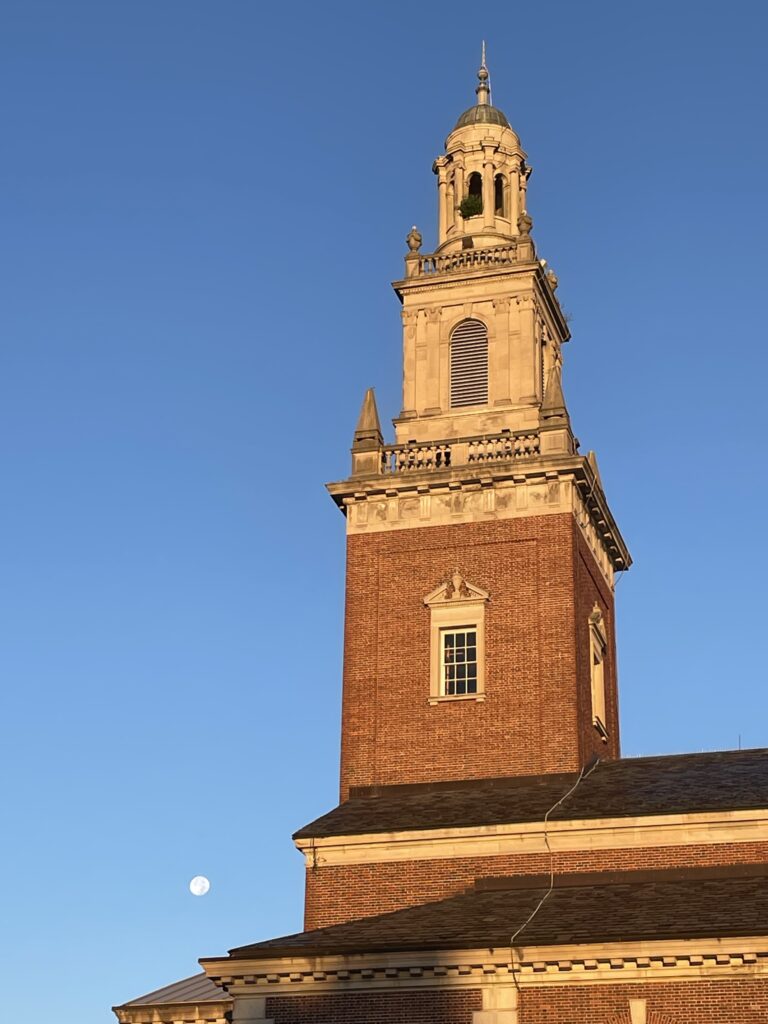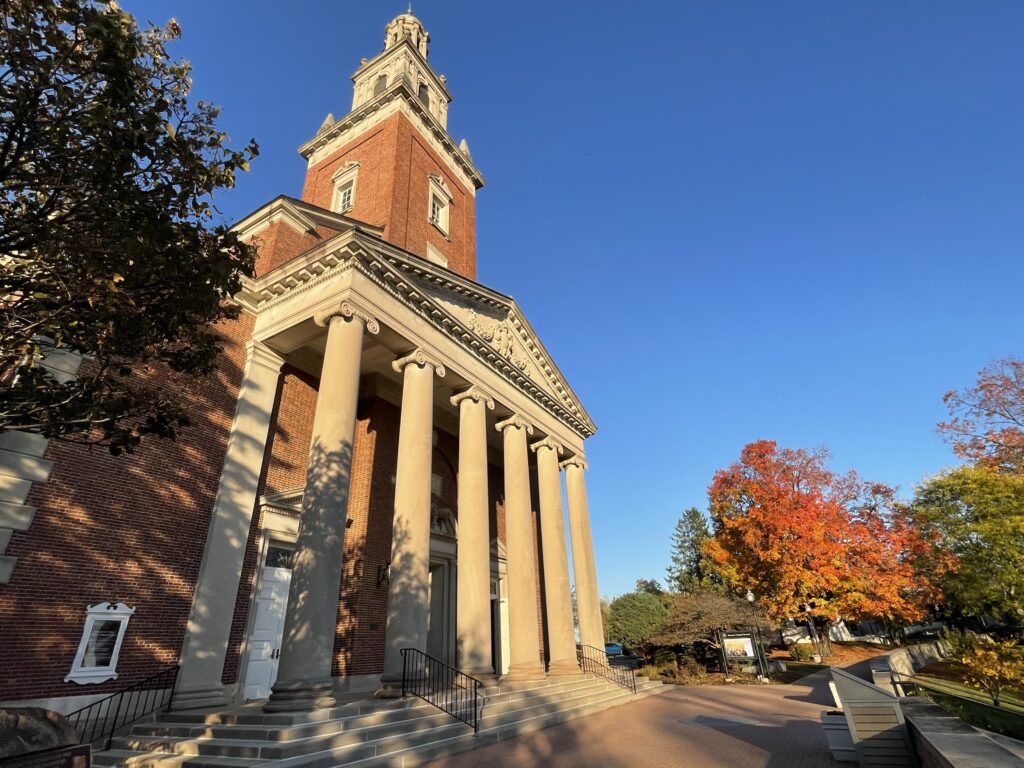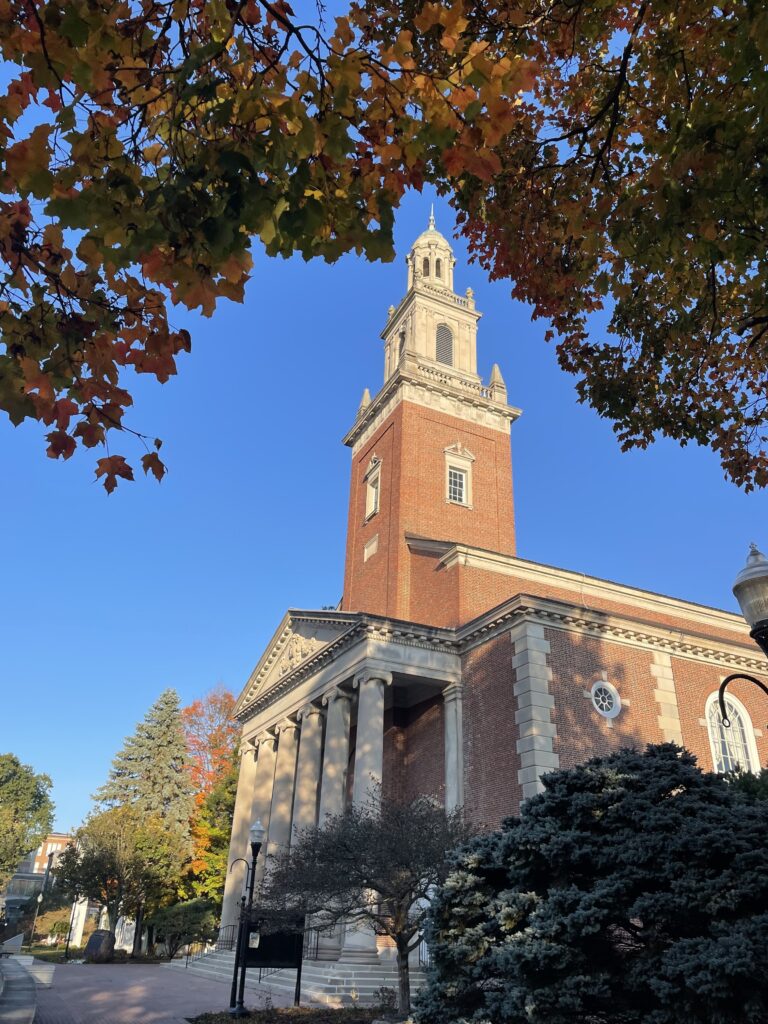Architecture has a vocabulary and grammar all its own.
Many of us learned in school about the Doric, Ionic, and Corinthian orders, identifying them by their distinctive capitals. Palladian windows were made famous in this country through U.S. President Thomas Jefferson’s Monticello.Greek Revival architecture is one of Granville’s distinctive features, seen in the Avery-Downer House and St. Luke’s Episcopal Church in the village, and Denison University’s Beth Eden building, a late addition to that style.
Swasey Chapel, also on Denison’s campus, was constructed in the early 1920s, and dedicated in April 1924. It has long been described as echoing Sir Christopher Wren’s style of English churches – a detail repeated on the university’s website.
This centennial year of the chapel is a good time to examine that oft-repeated description, because there’s a problem with it.
The body of Swasey Chapel is indeed classic red-brick Georgian church architecture, with symmetry and a grand portico, limestone pillars holding up a classic triangular pediment.
But that steeple: It has long puzzled me. I know my Christopher Wren, and I have books of London churches and access to the internet.
And that steeple isn’t Christopher Wren. Trust me: I’ve tried to find a comparison. For a while, I wondered if people had confused Wren and Nicholas Hawksmoor, a near-contemporary whose steeples were idiosyncratic, but his didn’t match, either.
Swasey Chapel has, in architectural terms from top down, a dome resting on a columnar drum, a circular stage made up of pillars; The drum sits between four urns atop a square tower framing arches on each side, then an even larger square tower with obelisks on each corner which then blends into the body of the building. That dome-drum-square-tower-square-tower sequence, urns above obelisks, an arched tower above the more solid square base, is a sort of architectural statement that should have a precedent somewhere.
Arnold Brunner often is credited with being the architect of Swasey, and he had a hand in the general work of that era for Denison – some of New York City’s largest synagogues and the Pennsylvania State Capital. But in the back of the chapel is a plaque honoring William Gehron, who was chief designer for Brunner through 1922, and later in partnership with Gilbert Seltzer, who designed dozens of buildings on today’s Denison campus.
It’s somewhat unclear if Brunner or Gehron designed Swasey. What we can say with confidence about the Swasey Chapel belfry is this: It’s a Giralda tower.


That’s the name of an architectural sequence first seen in a 16th century remodeling atop a 12th-century mosque built on 9th century foundations in what is today Seville, Spain. The drum sitting on a cylinder of columns, an arched square tower below ornamented with urns, supported by a larger square tower: It was originally an Islamic minaret. Converted into a cathedral in 1248, the minaret became a bell tower in the 1560s with the design we see echoed on Swasey.
How did a Giralda tower get to Granville? The Moorish Revival style led to a Giralda tower on the second Madison Square Garden in 1890. A white marble rendition was built in Chicago as the Wrigley Building in 1920. About the same time as Swasey was being designed, the Country Club Plaza south of downtown Kansas City, Missouri – the first “suburban” shopping center in the United States – was anchored by a Giralda tower in 1922. Not long after that, in 1925, the Biltmore Coral Gables, outside of Miami, was built to the Giralda design. You could say this particular architectural vocabulary was “in the air” during those years.
At Denison, the Georgian red brick and limestone chapel and monumental entryway push the steeple up and somewhat out of sight as you enter. From a distance, it anchors the campus from every direction. From the perspective of centuries and cultures, Swasey Chapel echoes al-Andalus and Islam, Seville and Chicago, the academic and the architectural, and yes, just a hint of Christopher Wren and the streets of London.
Jeff Gill is a pastor, a mediator and a freelance writer in Granville, Ohio.







